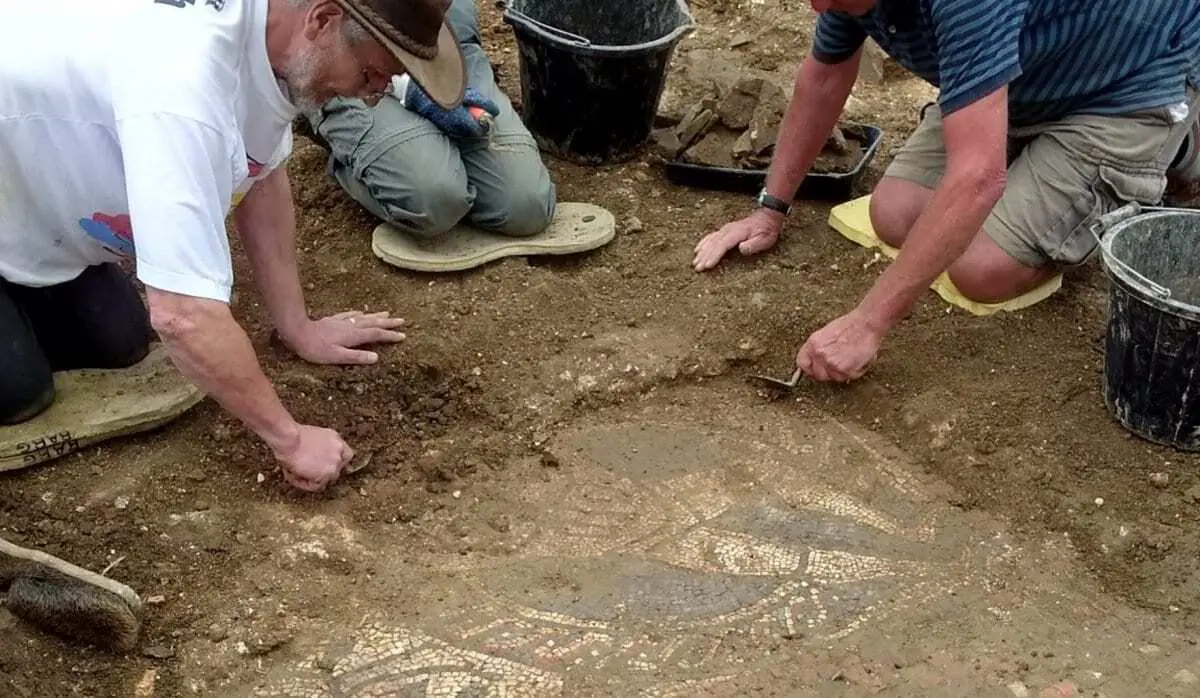A stunning Roman mosaic floor has been partly uncovered during a community archaeological dig in Berkshire, England.
The figurative mosaic is packed with mythical characters and beasts based on Greek legend and mythology.
Anthony Beeson, an expert on Roman Mosaics said: “This is without question the most exciting mosaic discovery made in Britain in the last fifty years and must take a premier place amongst those Romano-British works of art that have come down to modern Britons.”
Luigi Thompson, known for his paintings of mosaics said, “If I had the choice of only doing one painting in my career, it would be this one. It is the most delightful, lively and charming pavement I have ever seen. It causes me to imagine, with pleasure, the villa owner entertaining his guests with his knowledge of classical mythology.”

The excavation near Boxford in Berkshire was the last in a three-year project funded by the Heritage Lottery Fund to investigate three Roman sites in the area. It was a joint project between the BHP (Boxford History Project), the Berkshire Archaeology Research Group and Cotswold Archaeology, who provided the professional supervision of the excavations.
The site has now been backfilled, but it’s hoped that future excavations will reveal the whole area of the mosaic and excavate more fully a Roman bath suite found in the same villa.
The Chairman of the Boxford History Project said that the first Heritage Lottery funded dig in 2015 revealed a large villa and bath house, the second in 2016 a farmstead and this year another villa with a beautiful mosaic.
Header Image Credit : Cotswold Archaeology







